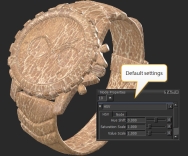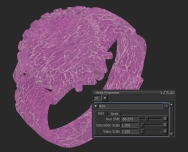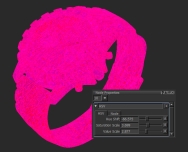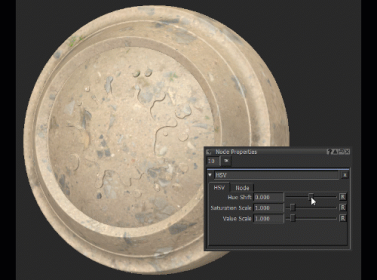HSV Node
Access: Nodes > Filter > HSV
The HSV (Hue, Saturation, Value) node is a filter node that adjusts the input data by letting you change the hue, saturation, and value of the colors that are fed into it.
|
HSV node's default settings |
HSV node's Hue Shift decreased, |
HSV node's Hue Shift decreased, |
Note: The HSV node is similar to the HUE filter. Unlike the HSV node the HUE filter is destructive. See Available Filters for more information.
HSV Node Inputs
Input - Any nodes containing textures or paint that need to be altered can be connected to the HSV node, for example, Tiled and Paint nodes.
HSV Node Properties
|
Hue Shift
|
Changes the hue (or tint) of the colors. This moves the colors around the color wheel. |
|
Saturation Scale
|
Increases or decreases the depth of color of the hue. |
|
Value Scale
|
Increases or decreases the intensity of the hue. |
HSV: Node Graph Workflow Example
In the example below, let’s use an HSV node to change the saturation of the texture.
| 1. | Create a Tiled node. |

Adding a Tiled node to the scene.
| 2. | Create an HSV node. Connect the Tiled node to the Input input of the HSV node. |

Adding an HSV node to the output of the Tiled node to adjust the saturation of the texture.
| 3. | Open the |
Notice how the texture becomes more saturated as the Saturation Scale parameter is adjusted.
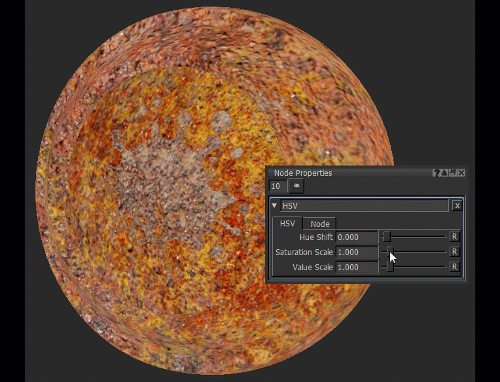
Changing the Saturation Scale value to adjust the saturation of the texture.
